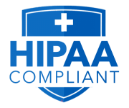Did you know that nearly 45 percent of all small to medium-sized businesses (SMBs) in the US still rely on paper records? This reliance on paper documents stifles employee productivity and exposes organizations to security risks, compliance challenges, and storage inefficiencies.
Hundreds of hours of employees’ time are lost searching for misplaced files. The sensitive data contained in paper documents is vulnerable to theft. Moreover, large cabinets containing paper documents occupy valuable office space that could have been utilized for more productive tasks.
Digital document management solutions help organizations embrace digital transformation and avoid the constraints of paper. Digital imaging providers offer specialized document imaging solutions for businesses that help them convert their physical documents into secure and easily accessible digital files.
In this article, we will provide practical tips for businesses on effectively converting paper documents to digital formats. You’ll also learn about best practices for scanning, indexing, and storing digital files.
1. Choosing the Right Document Imaging Company
When it comes to selecting a reliable document imaging company, you should consider a few key criteria. First and foremost, you should consider their reputation and experience. An established entity with good feedback and a previous performance history will make better promises and deliver quality services.
Further, you should focus on providers that can offer diverse services, like scanning in the highest resolution and different image formats. They should also give customers the flexibility to capture documents in formats that suit their needs.
Furthermore, professional services include additional features such as OCR and metadata tagging that enhance the usability and accessibility of documents.
Several top document imaging companies stand out for their quality and reliability. For instance, companies like Smooth Solutions have earned a reputation for excellence. They offer state-of-the-art scanning technology and comprehensive services, making them solid choices for businesses looking to digitize their essential documents.
2. Ensure Best Practices for Scanning Documents
For the best results, you must follow some basic guidelines for documents before scanning them. Before submitting your documents, you should ensure they don’t contain staples or paper clips, which could cause problems when scanning them.
If needed, straighten the paper lightly so that there are no distortions in the scanned images caused by some folds. Following these practices will ensure that the scanning is done correctly and without issues.
Another essential decision to make is selecting a proper resolution and format. Setting the scanning DPI between 300 and 600 DPI when creating most documents will be advisable. In addition, you should save your scanned files in PDF or TIFF format for the best results. These formats are much supported by most systems, making the documents more accessible
3. Effective Indexing Techniques
Organizing and indexing digital files is crucial for keeping your documents easily accessible. You should start by using consistent methods for categorizing your files. This might include organizing them by date, event, or document type. This structured approach helps you find the necessary document quickly without sifting through countless files.
Incorporating metadata and tags into your digital files can greatly enhance retrieval efficiency—metadata includes details like the document’s date, location, and subject. Tags allow you to add keywords related to
the content, making searches more intuitive.
You consider using specialized tools and software to streamline the indexing process. Programs like Adobe Lightroom or dedicated digital asset management systems offer robust indexing and tagging capabilities. These tools help you organize your files and allow for batch processing, saving you time and effort in managing your photo collection.
4. Storing and Securing Digital Files
It is also important to follow best practices for storing and securing your files. You must ensure that your files are stored in a reliable and organized manner. Consider using folders and naming conventions that make sense to you and align with the way you’ve indexed your photos. This organization helps prevent accidental loss or misplacement of files.
Data security and backup solutions are also essential to protect your digital files. You should back up your files regularly, preferably in more than one location, such as external hard drives or the cloud. This ensures your digitized documents are safe from loss of data due to hardware and software failure or other issues. Implementing strong password protection and encryption can further safeguard your sensitive information.
Conclusion
Document scanning services efficiently preserve and enhance documents. Selecting the right document imaging company will ensure that your paper documents are digitized securely.
The best quality document scanning services can be beneficial for maintaining and expanding your digital archives. It provides an opportunity to improve the organization of your digital files, making it easier to manage and retrieve important digitized information.
Contact Smooth Solutions for an affordable document scanning service. We are a premier document imaging company based in Lodi, NJ, providing high-quality and efficient document conversion services. Our team offers on-site scanning services that can digitize your documents in your location. We ensure that your documents remain safe and confidential during the conversion process.
So, let’s get started by dialing 973-249-6666














